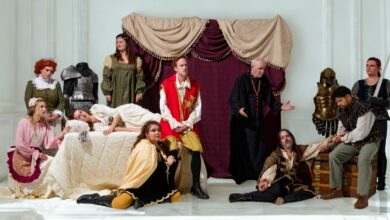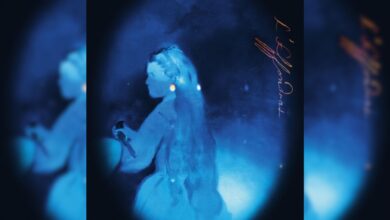Exhibit Review: ‘Listening to the Land’ at FAB gallery
From a lover's old shirt to strawberry dye, this exhibit shines a new light on our relationships with land.
 Nitasha Baig
Nitasha Baig Second-hand fabrics, homemade dyes, and participatory works create an immersive space for viewers to investigate their relationship to land and nature at the Fine Arts Building (FAB) gallery.
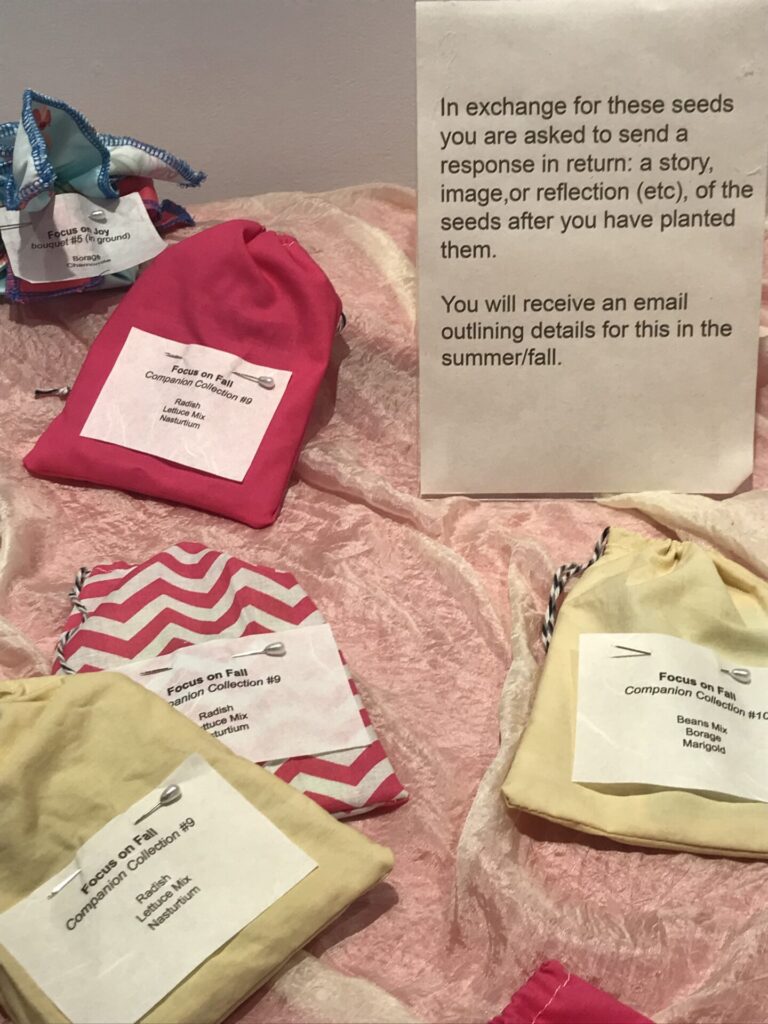
In Listening to the Land, Christina Battle and Lara Felsing explore the intertwined relationships between individuals, community, and land through their art. The artists both urge viewers to re-evaluate their treatment of the land and inspire the power to change. Thrifted materials, photographs, and latex paint emphasize our ability to neglect or protect the world around us.
Battle, a curator and featured artist, begins the exhibit with her project, seeds are meant to disperse. In this interactive work, pouches of seeds were laid carefully on a table and available for participants to take home. After planting the seeds, you have the chance to share a story about the seeds’ growth and where you planted them. The story then becomes a part of an online collection that showcases the community’s far-reaching hands.
The project introduces the connections between us and our natural surroundings that Battle and Felsing investigate throughout the gallery. This way, viewers enter the space having formed bonds with the seeds in their hands and the people around them.
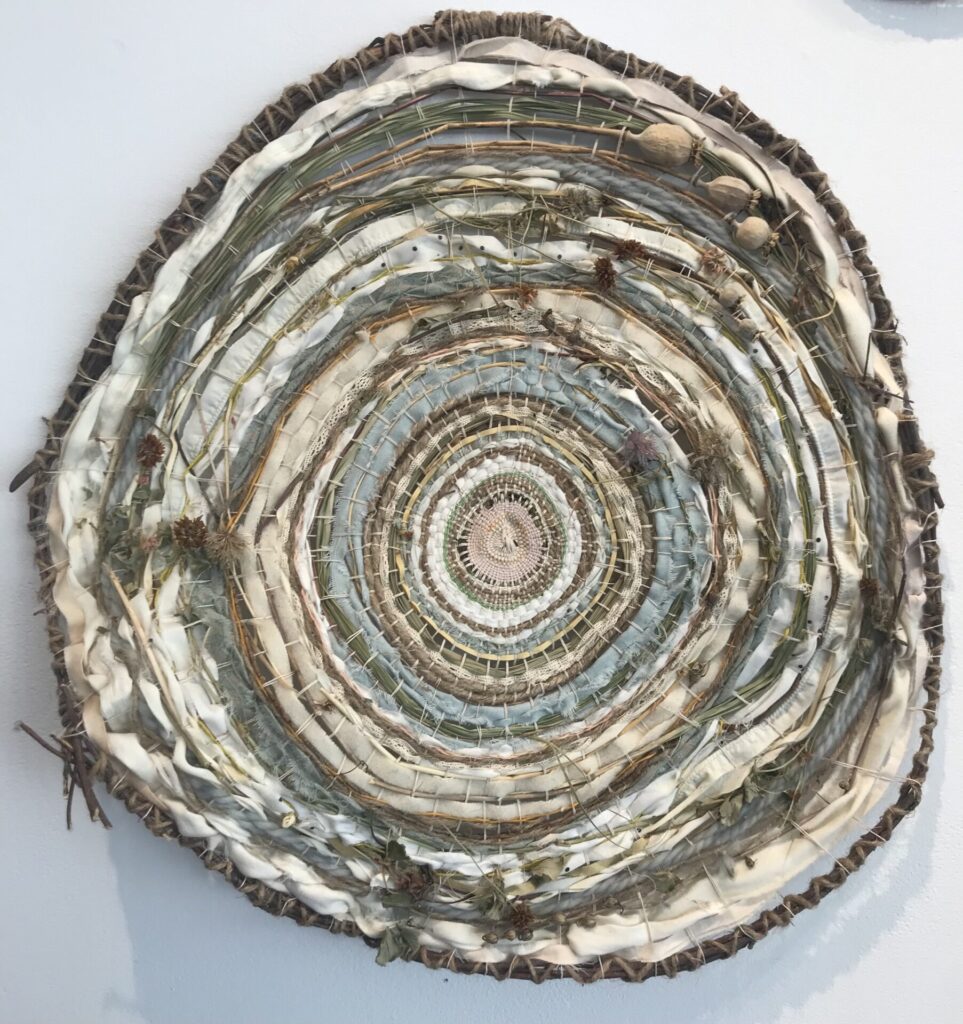
Felsing’s White Birch Tree Ring Timeline reinforces this sense of unity. Among other materials, the interdisciplinary Métis artist weaves together willow branches, strawberry runners, and an old shirt from her partner to create a 24-inch ring. The repetition of dark wood and off-white fabric evokes a sense of growth and intimacy. I could almost see the silhouette of her partner among the trees with tendrils of strawberry vines beneath his feet.
However, the relationship between us and the land is not always an affectionate one.
In the middle gallery, Felsing presents one of her larger works, Bear 142. A swath of spruce-dyed fabric reads “142” in flashy latex paint, startling in comparison to the earlier muted tones. This shock draws attention to the canvas where Felsing has sewed in a photograph of the real Bear 142, a bear famous for wandering around Lake Louise and the Bow Valley Parkway. While bears such as Split Lip, another notorious Banff grizzly, have names, Bear 142 is not so lucky.
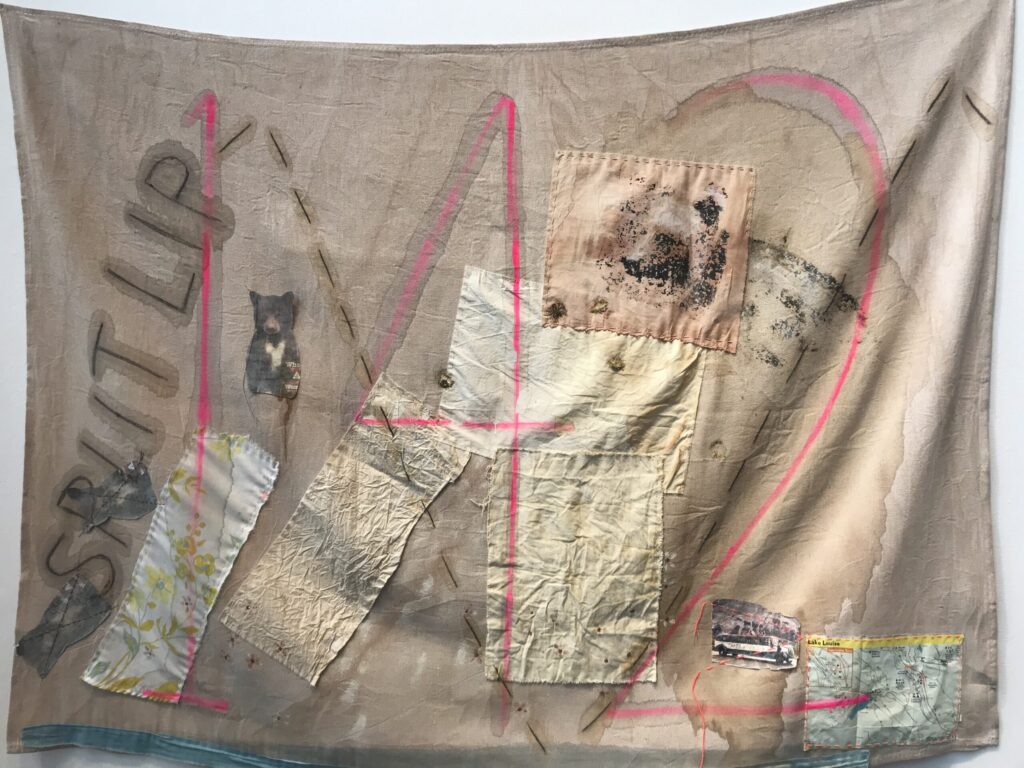
The impersonal nature of this choice contradicts the familiarity that the White Birch Tree Ring Timeline presented, inviting viewers to question using numbers to describe warm, breathing animals.
Afterwards, the gallery ends with a continuation of seeds are meant to disperse. Unlike with the initial display, the final piece consists of a video installation surrounded by close-up photographs of different seeds. To ensure the video remains vibrant, the display is comparatively dimmer and transports the viewer into another world. Taking a closer look at the photos, the subjects are slightly blurred with undefined edges, enhancing the exhibition’s dreamy quality.
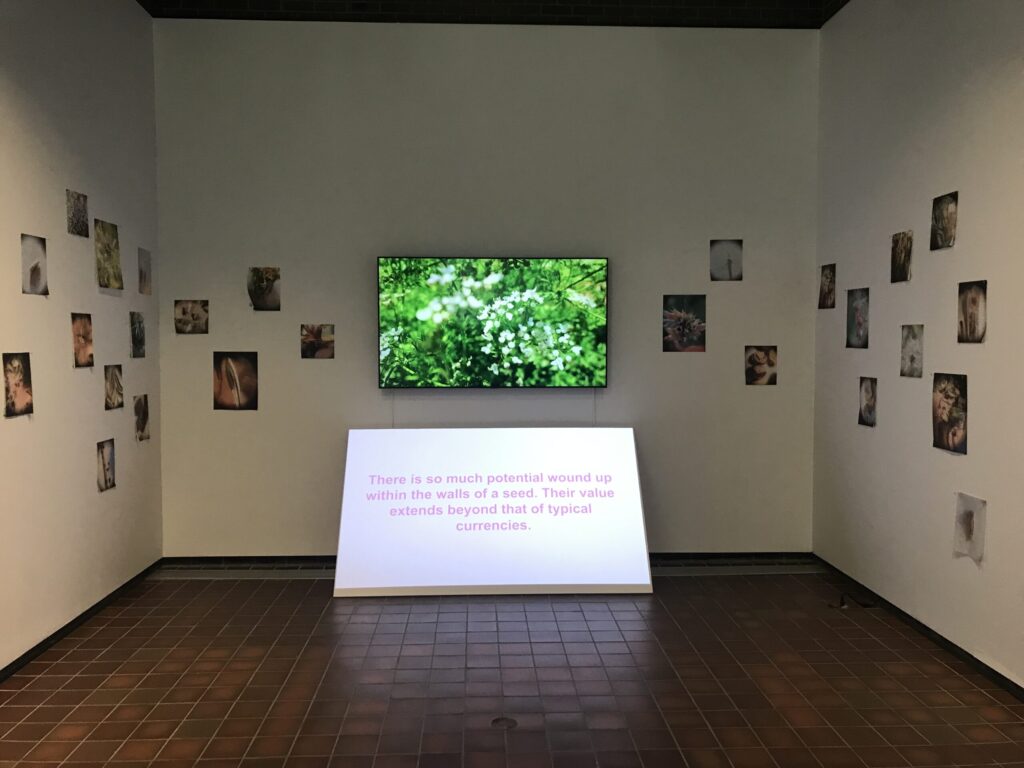
At the same time, the video discusses the extinction of 75 per cent of global crop diversity. Bright yellow and white backgrounds contrast these harrowing statistics, accompanying the intensifying sense of urgency with bright optimism. If you had not picked up a pouch earlier, you were sure to do so on your way out.
Battle’s artistic contribution concludes the exhibit, but there are several other works by Felsing that decorate the space. The use of neon flagging tape continues across these pieces and presents the same sharp contrasts as the latex paint. More, quieter pieces carry the power of White Birch Tree Ring Timeline and Bear 142 but share different aspects of our relationship with land.
In the process, Listening to the Land not only gives viewers the chance to listen, but to know and understand the lands that make up our home.
Listening to the Land will be displayed at FAB Gallery until July 6.

